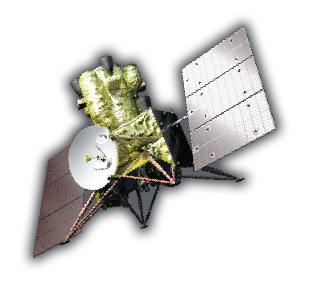Special Sessions
Special Program 1: World Space Highlight
Date: July 14 (Mon.) 10:30 – 12:00
Place: Arena (1F)
Moderator: Dr. Masami Onoda, Director, International Relations and Research Department, JAXA
Panelists:
(1) Mr. Andrew Masciola, NASA Asia Representative
(2) Dr. Niklas Reinke, Director Tokyo Office, DLR
(3) Mr. Julien Mariez, Regional Counsellor for Space Affairs, CNES
(4) Prof. Marco Casolino, Space Attaché, Embassy of Italy to Japan
- Introduction including JAXA’s Highlight: Moderator (7 minutes)
- International Partners’ space program and collaborations (10 minutes each including Q&A)
- Discussion: All (30 minutes)
- Closing: Moderator (3 minutes)
Keynote Speech1 / Evolution of Space Transportation by Academia and Startup Collaborations
Date: July 14 (Mon.) 14:30 – 15:15
Place: Arena (1F)
Moderator: Prof. Satoshi Nonaka ,Chairperson of the Program Committee ISTS, JAXA
Speaker: Prof. Yasuhiro Morita
Professor Emeritus of ISAS/JAXA & CEO of Rocket Link Technology
Evolution of Space Transportation by Academia and Startup Collaborations
Japan’s rocket venture business will become increasingly important in this coming decade as declared by the government: small launchers and manned space vehicles are defined to be developed by the startup sectors. The government is willing to provide strong financial support to help them develop their unique rockets: SBIR and JAXA fund. In addition, there are more contributions we can make: how can we make the venture business much stronger to compete in the world market? It cannot be forgotten that the past academic achievements have become a strong basis to establish the representative startup companies. To accelerate the venture activities in a better way, we must be more strategic and collaborative among all the stakeholders including JAXA, the space and non-space industries, the academia, the government and more. The talk will provide some tips in this respect.
Keynote Speech 2 / Looking back on SLIM’s moon landing, looking ahead to the future
Date: July 14 (Mon.) 15:25 – 16:10
Place: Arena (1F)
Moderator: Prof. Satoshi Nonaka, Chairperson of the Program Committee ISTS, JAXA
Speaker : Shin-ishiro Sakai
Professor, ISAS/JAXA, SLIM Project Manager
Looking back on SLIM’s moon landing, looking ahead to the future
The Smart Lander for Investigating the Moon (SLIM), with a dry mass of about 200 kg, was launched by the H-IIA vehicle on September 7, 2023, and made an excision lunar landing on January 20, 2024 (JST). The landing precision was evaluated to be within ~10 m at an altitude of approximately 50m from the Moon surface, far exceeding the target landing accuracy of 100 m and realizing the world’s first pinpoint landing. In this keynote, we will review the achievements of SLIM’s lunar landing and discuss how those achievements can contribute to future space development.
Special Session 2/Memorial session:Under the wing of Prof.Kojiro Suzuki, Toward New Space Frontiers
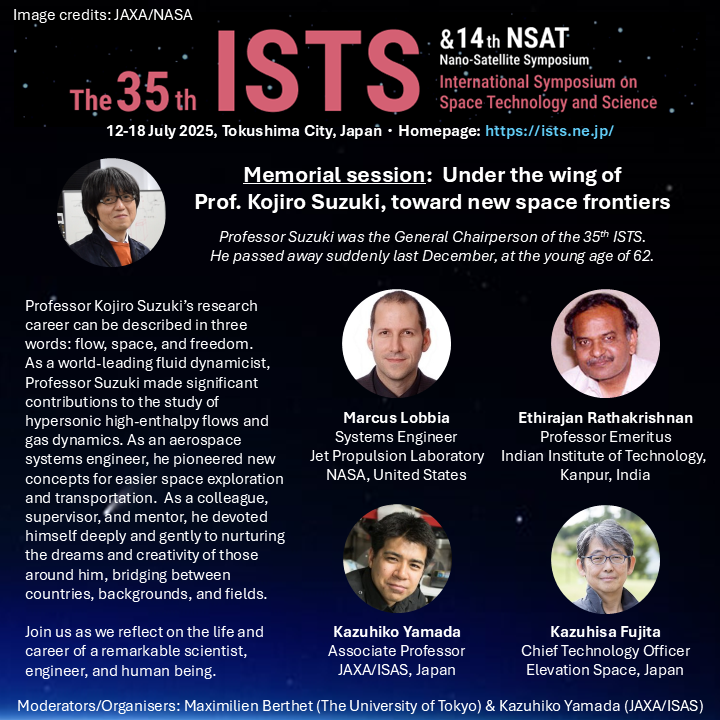
Date: July 14 (Mon.) 16:30 – 17:30
Place: Arena (1F)
Moderators: Maximilien Berthet
Speakers: Marcus Lobbia : Systems Engineer Jet Propulsion Laboratory, NASA, United States
“Perspectives as a past graduate student of Prof. Kojiro Suzuki”
Ethirajan Rathakrishnan: Professor Emeritus Indian Institute of Technology,Kanpur, India
“Professor Suzuki and Hypersonic Flow”
Kazuhiko Yamada: Associate Professor JAXA/ISAS, Japan
“Research and develop activity on the inflatable aeroshell atmospheric-entry technology.
~Start from preliminary study, challenge to flight demonstration and future vision~”
Kazuhisa Fujita : Chief Technology Officer Elevation Space, Japan
Professor Kojiro Suzuki was the General Chairperson of the 35th ISTS, and Professor in the Graduate School of Frontier Sciences at The University of Tokyo. He passed away suddenly last December, at the young age of 62.
A special session will be held in his memory at the 35th ISTS, on Monday 14 July, 16:30-17:30. It will be open to the public.
Professor Suzuki’s research career can be described in three words: flow, space, and freedom. As a world-leading fluid dynamicist, Professor Suzuki made significant contributions to the study of hypersonic high-enthalpy flows and gas dynamics. As an aerospace systems engineer, he pioneered new concepts for easier space exploration and transportation. As a colleague, supervisor, and mentor, he devoted himself deeply and gently to nurturing the dreams and creativity of those around him, bridging between countries, backgrounds, and fields.
Join us as we reflect on the life and career of a remarkable scientist, engineer, and human being. Presentations by close colleagues of Professor Suzuki will be accompanied by pre-recorded messages and videos.
Organise Session
Organized Session 1 (OS-1) / Soaring to new heights : Towards novel space transportation by industry-government-academia collaboration in Japan
Date and time : July 15th, 2025. 9:00-10:40am
Place: Arena 1F
Organizer
Yusuke Maru and Wataru Sarae (JAXA)
Objectives
- To promote private-sector initiatives that are currently a major driving force in space transportation
- Sharing expectations for industry-government-academia collaboration to accelerate the development of space transportation systems
Speakers: Each speaker has 20-minute-talk including Q&A.
- Jiro KASAHARA, professor, Nagoya University
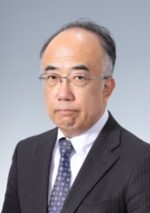
Title: Formation of the Detonation Engine and Space Propulsion Engineering Innovation Research Hub
Abstract: As part of this research hub “Formation of the Detonation Engine and Space Propulsion Engineering Innovation Research Hub”, the flight demonstration using the sounding rocket S-520-36 and the construction of large-scale detonation engine experimental facilities will occur alongside more in-depth fundamental research. Furthermore, the research hub aims to be the first to demonstrate a detonation engine system in orbit. This presentation provides an overview of these activities of the hub.
- Hiroshi SASAKI, General Producer of Space Strategy Fund, JAXA
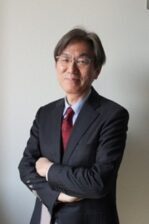
Biography: Hiroshi Sasaki is General Producer of Space Strategy Fund in the Japanese Aerospace Exploration Agency (JAXA). Mr. Sasaki is engaged in leading the selection and promoting technology development in the fields of low Earth orbit, lunar development, science, and in-orbit servicing. In his previous position, he was JAXA Vice President in charge of the Human Space Technology Division, International Space Exploration Center and Space Exploration Innovation Hub Center, where he promoted the ISS and Artemis programs, as well as open inovation reserach, astronaut selection and future low earth orbit preparation. In the past, he has served as Director of International Space Exploration Center, Director of the Science Promotion Department, and HTV Deputy Project Manager.
Before joining JAXA, Hiroshi Sasaki completed a Masters of Engineering at the University of Tokyo.
Title: Human Spaceflight Trends
Abstract: In recent years, Human Spaceflight development has become active, by private companies in the United States and by countries such as China and India. In addition, research and development of Human transportation is just started in Japan as well.
So, in this session the international trends in Human Spaceflight, including low earth orbit and cislunar, are introduced and the necessity of Research and Development for Human Transportation in Japan will be described.
- Shinichi TAKATA, the Space Strategy Fund, JAXA
- Tadayoshi SHOYAMA, Ph.D., Chief Scientist, Innovative Space Carrier Inc.
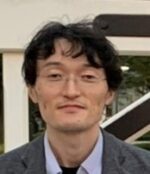
Biography: Tadayoshi Shoyama has about 25 years of experience of dynamical problems in the fields of aerospace engineering and mechanical engineering, and earned his Ph.D. at department of aeronautics and astronautics, The University of Tokyo in 2018. He has expertise in the areas of launch vehicle dynamics, rotor dynamcs and viscoelastic materials. He was in charge of development of sounding rockets and Epsilon rocket in IHI Aerospace, where he studied various dynamical issues including the launch vehicle trajectory analysis and the launch safety. Now he is the Chief Scientist at Innovative Space Carrier Inc.
Title: ISC’s Vision and Technology Roadmap to Realize Frequent Access to Space with SSTO
Abstract: ISC has a multi-phase development program aiming to realize Single-Stage-To-Orbit (SSTO) vehicles as a high-frequency transport system between Earth and orbit, or between two points on Earth by the 2040s. SSTO systems are an optimal configuration for future transportation, at a similar level of frequency as aviation, because they eliminate the need for expendable stages and complex recovery operations associated with multi-stage rockets. To achieve this vision, ISC is developing a series of vehicles: ASCA1 (a reusable orbital launcher), ASCA2 (a crew-capable system), and ASCA3 (a fully reusable SSTO vehicle). ASCA1 has been selected under Japan’s SBIR program by the Ministry of Economy, Trade and Industry (METI). Currently, system design, flight safety analyses and detailed design are being conducted. The first-stage propellant tanks are being manufactured using Wire Arc Additive Manufacturing (WAAM), while second-stage tanks are being developed using CFRP composite materials. Since the development of rocket engines is associated with a high technical risk, ISC is pursuing both internal development and external procurement strategies. To date, successful ignition tests have been conducted for both 1-ton and 3-ton class methane engines.
ASCA2 is designed to demonstrate technologies essential for human spaceflight. The current focus is on a suborbital configuration with a reusable booster and a pressurized cabin capable of carrying civilian passengers. The final target, ASCA3, will be a fully reusable SSTO system, capable of carrying crews. Based on sizing studies, engine specifications required for orbital ascent have been defined. Additionally, optimization of the ascent trajectory to reduce structural mass and structural design of a winged vehicle for horizontal landing are underway, in collaboration with JAXA. This development effort is being carried out in collaboration with various partners, including private industry, academia, and research institutions. As the scale and cost of the program continue to grow, ISC seeks further support and engagement from the broader aerospace community.
- Koji KANEKO, Business Development Dept. Leader, SPACE COTAN
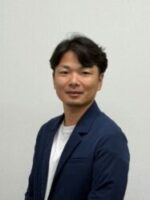
Title: Realizing High-Frequency Launch Capabilities at HOSPO
Abstract: Enhancing the international competitiveness of Japan’s space industry, Hokkaido Spaceport (HOSPO) aims to realize high-frequency launch capabilities. The key to this is “standardization” on two fronts: 1) technology and 2) legal frameworks. Technologically, SPACE COTAN is developing common launch site facilities, supported by the Space Strategy Fund. In terms of legal frameworks, SPACE COTAN will collaborate with global commercial spaceports to study and define common policies, standards, and operations. Through these initiatives, HOSPO aims to achieve these capabilities and become the hub spaceport in Asia.
Organized Session 2(OS-2)/A new era of international collaboration: The role of non-governmental actors
Date: July 15 (Tus)11:00 – 12:40
Place: Arena (1F)
Organisers/Moderators: Maximilien Berthet, Department of Aeronautics and Astronautics, The University of Tokyo, Japan.
Ikuko Kuriyama, Institute for Future Initiatives, The University of Tokyo, Japan.
Speakers: Alex da Silva Curiel, Head of International Business, Surrey Satellite Technology Ltd (SSTL), UK.
“Lessons learned from over 20 international space mission partnerships”
Marco Aliberti, Lead on International Engagement, European Space Policy Institute (ESPI), Austria.
“Non-Governmental Pathways to Space Diplomacy: The Power of Ideas and Think Tanks”
Chris Blackerby, COO, Astroscale, Japan.
“Satellite Servicing: Ensuring Security and Expanding Economies in Orbit”
Hazuki Mori, Lead, Space Technology, World Economic Forum.
“Overview of the Space Activities of the World Economic Forum”
Joshua Critchley-Marrows, Chair of Space Generation Advisory Council (SGAC).
“The role of the next generation in shaping international collaboration”
Shinichi Nakasuka, Professor, Department of Aeronautics and Astronautics,The University of Tokyo, Japan.
“University community for space activities – UNISEC-GLOBAL Challenge”
Objectives & Overview
A new era of international collaboration in space has taken root, in which academia and industry are more prominent than ever before. In parallel, sustainable use of outer space has become the common global challenge facing all space actors. For instance, in 2024 the UN Summit of the Future adopted the Pact for the Future, inviting the contribution of the private sector, civil society, and other stakeholders to international discussion for ensuring sustainability of outer space. Given this new reality, what is the role that non-governmental actors should play in promoting international cooperation towards sustainable space development? In this session, diverse distinguished experts from the private sector, academia, and think-tanks will provide perspectives on promising approaches to cooperate in space for the benefit of all humanity, with particular focus on the Asia-Pacific region.
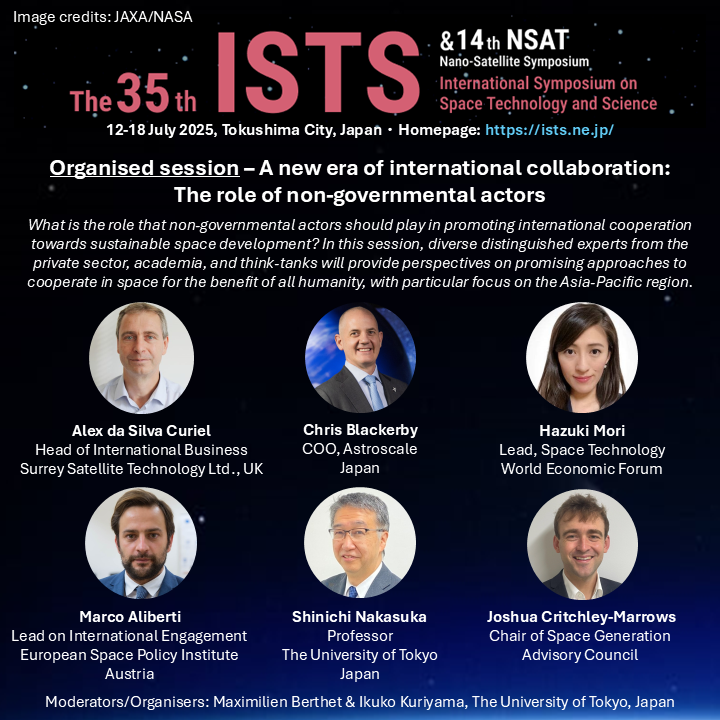
Organized Session 3(OS-3)/Nutrition and Food Production in Space
Date : July 15 (Tus.) 14:00 – 17:40
Place : Arena (1F)
Chairpersions: Professor Yoshiaki Kitaya (Osaka Metropolitan University)
Professor Takeshi Nikawa (Tokushima University)
In space missions, such as those involving space shuttles and the International Space Station, food supply has primarily relied on transportation from Earth. Currently, as part of human space exploration, long-term habitation plans on the Moon and Mars are being advanced worldwide. In these cases, there are numerous challenges, such as the long time required for food supply from Earth and limitations on the amount of food that can be transported. Therefore, it is essential to produce food on the Moon or Mars.
On the Moon and Mars, various environmental factors that affect food production, such as gravity, atmospheric pressure, atmospheric composition, temperature, humidity, light, and water availability, differ from those on Earth. Any issues with these factors could hinder physical activities or food production. Just as different regions on Earth have their own dietary habits and foods suited to their climates, space facilities are also likely to develop unique food cultures and methods of food production.
In this session, experts active both domestically and internationally will introduce the kinds of diets that should be adopted or the types of food that should be produced in the
space environment.
Space Nutrition & Life Science in Space
Tatsuya Shimizu(Tokyo Women’s Medical University)
Circular Cell Culture System Using Microalgae and Animal Cells for Future Space Food
Nobuyo Tsuboyama-Kasaoka (National Institutes of Biomedical Innovation, Health and Nutrition)
Frontiers in Disaster Nutrition and Space Nutrition
Stephane Blanc (CNRS)
Energy and subtrate metabolism during spaceflights and analogs. ーInferences for health on Earth
Takeshi Nikawa, Katsuyuki Miyawaki, Takahiko Watanabe, Taro Mito, and Akira Takahashi (Institute of Space Nutrition & Medicine, Tokushima Univ. )
Anti-muscle atrophic protein food source in space: Development of a recirculatory
rearing system for soybeans and crickets
- Food Production in Space
Chen Xi, Kaoru Yoshiyama (Okamoto), Genji Kamada, Haruo Kasahara, Daisuke Masuda Toru Shimazu, Kana Kuriyama, Kazumi Koga, Tomokazu Yamazaki, Noriko Matsuzaki, Akira Higashibata, Jun Hidema (Research Center for Space Agriculture and Horticulture, Chiba University)
Study on plant responses against the stresses of microgravity and high ultraviolet radiation in space
Yoshiaki Kitaya (Osaka Metropolitan University, Japan)
Sweetpotato culture in space farming in CELSS
Toshiro Kaneko, Daiki Suzuki, Shota Sasaki, Atsushi Higashitani(Graduate School of Engineering, Tohoku University)
Plasma-Synthesized Dinitrogen Pentoxide for Rice Cultivation on Lunar Farms
Guillemette Gauquelin-Koch (CNES)
Nutrition in Space
